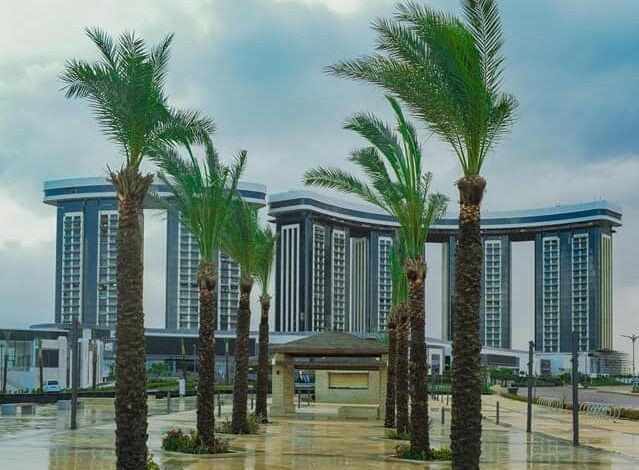
In an unprecedented surge of urban and tourism development, Egypt’s Mediterranean coast is undergoing a dramatic transformation.
Giant projects are underway, designed to elevate the North Coast from a seasonal destination to a year-round, world-class tourism hub – one that is poised to compete with established hotspots like Barcelona, Nice, and Athens.
According to a report from the Spanish website “ECD,” this hasn’t gone unnoticed in Europe.
The UK, Spain, and Greece have all expressed growing concern over the potential impact of these new Egyptian coastal cities on international tourism.
British reports, in particular, have warned that millions of tourists could divert to North Africa, threatening traditional Southern European destinations.
The report emphasizes that projects like the New El Alamein City and Ras al-Hekma are more than just urban developments; they are a clear declaration of Egypt’s entry into the luxurious Mediterranean tourism market.
Since 2018, the Egyptian government has pursued a strategic, multi-billion dollar plan to build major coastal cities on the Mediterranean, with the stated goal of redrawing the map of Mediterranean tourism and creating a strong alternative to traditional European destinations.
The Spanish website explained that Egypt’s ambition goes beyond its pristine beaches, aiming instead for a sophisticated tourism model that blends luxury with sustainability.
This approach targets a wide segment of international tourists seeking a unique experience that combines ancient Egyptian culture with modern urban living.
Leading this development is New El Alamein City, a monumental project covering an area of 50,000 feddans (200 square kilometers) and located just 48 kilometers from the regional international airport.
The city is slated to feature private beaches, luxury hotels, and towering residential skyscrapers, with its skyline dominated by the iconic 300-meter-tall El Alamein Tower, which is set to become one of the Mediterranean’s most prominent urban landmarks.
With a projected capacity of three million permanent residents and millions of seasonal tourists, New El Alamein is no mere real estate venture; it promises a major tourism city on par with global urban centers in its infrastructure and aspirations.
Following closely behind is the Ras El Hekma project.
Located between Alexandria and Marsa Matrouh, this development project is being planned as another coastal city – poised to become the largest in the Eastern Mediterranean – spanning an impressive 170,000 square kilometers. It is designed to accommodate two million permanent residents in addition to tourists.
The project includes seven luxury hotels, a marina aspiring to be the world’s largest, an international airport, and a high-speed rail network.
The plan for Ras El Hekma focuses on innovative solutions like water transport and a smart, sustainable urban design. It isn’t just a tourist resort but, but is planned to become a global economic and tourism hub that will significantly enhance Egypt’s competitive position in the Mediterranean.
The execution of these projects is being led by a consortium that includes the UAE’s Modon Holding in cooperation with Egypt’s Ras al-Hekma Urban Development Project Company, and is backed by investors from both the UAE and Egypt.
The stated vision is to build “smart and sustainable urban communities,” aligning with global trends in luxury tourism development.
According to the Spanish website, for Europe – especially Spain and Greece – the rise of Egypt’s coastal cities presents a direct threat to the tourist flow that has traditionally headed to the southern part of the continent.
If these cities succeed in attracting millions of international tourists, the entire tourism map of the Mediterranean will be redrawn.
Egypt views these projects as an opportunity to solidify its position as a global tourism powerhouse. Europe, on the other hand, sees them as a tough competitive challenge that may force it to reinvent its traditional tourism model.
The success of these new cities would mean that Egypt will no longer be seen as just a winter or archaeological destination but as a major player in Mediterranean tourism, competing fiercely with Europe’s major cities and compelling them to strategize to maintain their appeal.




